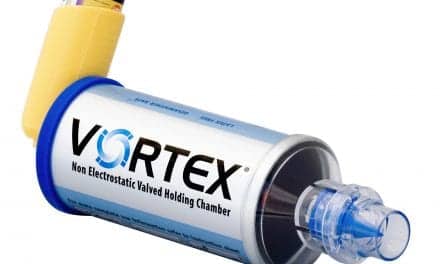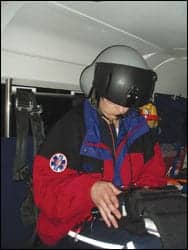The Asthma Initiative identifies and treats asthma among Harlem’s children.
The nonprofit group Harlem Children’s Zone (HCZ) Inc in New York City has enacted a twofold plan of action to combat the high rate of asthma in Harlem’s children: detect it, and, equally important, do something about it.
Betina Jean-Louis, PhD, director of evaluation for HCZ, says the reason for the high rate of asthma among Harlem’s children is a matter of speculation.

“There’s a lot of discussion about the pollution, particularly with the bus depots in Harlem—so many of them are located here. There’s a lot of discussion about the housing stock here. It’s older housing, and the way some of it is constructed may be conducive to triggering asthma and exacerbating asthma episodes. There is some discussion about all of the construction that is going on and how that might be exacerbating symptoms as well, in terms of all the dust that’s being kicked up and the increased mobility of the rodents that live in this community,” Jean-Louis says. “That hasn’t really been the focus of our initiative, though. The initiative has been really to determine who has asthma and to provide services directly to them.”
HCZ was founded in 1970 and provides various services and programs to children—from birth until they graduate from college—and their families in a 60-block area of Harlem, known as the Harlem Children’s Zone Project. Programs focus on education, health and fitness, and community-building.
It was through its programs that the organization launched the Harlem Children’s Zone Asthma Initiative (HCZAI) in fall 2001, in partnership with the Department of Pediatrics at Harlem Hospital Center and the Columbia School of Public Health. The Robin Hood Foundation, a nonprofit organization that targets poverty in New York, initially funded the initiative, which has since received additional funding through various grants, including one from the National Institute of Environmental Health Sciences (NIEHS). The HCZAI has a $897,000 budget, covering the program from September 2004 through June 2005. (The program has since received additional funding for its next fiscal year.)
HCZ and Harlem Hospital Center each created an asthma team to oversee the initiative. HCZ’s asthma team included three community workers, a nurse, and a program coordinator, while the hospital’s team included four community workers, a nurse/clinical coordinator, a health educator, a project manager, and an administrative assistant.
The initiative began with a screening that included a questionnaire that was distributed to the parents/guardians of children age 12 and under who attended the five local schools or who participate in HCZ programs. The children also received a physical examination by a physician or nurse.
To screen as many children as possible, the initiative also included children in Harlem Hospital Center’s inpatient, emergency, and clinic departments, as well as a block-by-block canvassing of recreational programs and day care centers.
After the determination of which children had asthma or asthma-like symptoms, families were contacted to establish who wanted to enroll in the HCZAI. A community health worker from one of the asthma teams then visited the homes of participating families to conduct a baseline assessment, collecting information on everything from a family medical history to an environmental history.
The initial visit was followed by an in-depth environmental visit, which included a walk-through of the home to complete a checklist of potential asthma triggers. “Once we identified what the family needed, we put together a plan to help them address their needs,” Jean-Louis says. “It was just coming up with ways to try to reduce the number of triggers and provide them with the resources that they needed to follow through.”
In an HCZAI report, as of September 2004, 3,132 children had been screened. Of those, 982 (31.4%) were found to have asthma or asthma-like symptoms, compared to the American Lung Association’s most current data from 2002, which showed that approximately 8% of children in the United States had asthma. “It’s off the charts,” says Kate Shoemaker, MPP, director of special projects for the president of HCZ. “It’s an extremely severe problem in Harlem. To have numbers this high compared to the national average is a health crisis. Something major is going on in the community that is putting these children at risk.”
Of the 982 families, 314 enrolled in the HCZAI. Follow-up home visits were conducted every 3 months. Over the course of the next 18 months, school absences decreased during the preceding 14 days of the follow-up visits. Absence for any reason dropped from 34.4% to 16%, and absence due to asthma dropped from 23.3% to 8%. During that same time, emergency department visits and unscheduled visits to the physician’s office also declined from 35% to 8%.
The HCZAI attributed the decreasing numbers to improved asthma management and appropriate use of health care services by the families enrolled in the program. “Before our program started, they were missing school, they were going to the emergency room, and it impacted children’s ability to exercise and play and just be normal kids and live a normal life. This is a major health crisis,” Shoemaker says.
The Centers for Disease Control and Prevention praised the HCZAI earlier this year for its efforts and results.
By March 2005, 3,699 surveys had been completed, with 475 families enrolling in the Asthma Initiative.
“We set about designing a program that would effect a holistic approach to asthma,” Shoemaker says. “We dealt with the medical, educational, legal, social services, and environmental factors in the home.”
Asthma management strategies include medication, an asthma action plan, and the use of a spacer device, which helps deliver inhaled medications deep into the lungs. The team educates families about asthma triggers and treatment. They might also provide enrollees with dust covers for bed mattresses and pest remediation services. Social interventions include HCZ’s services, as well as referrals to New York City agencies when needed.
“We intended to get a social worker, but we didn’t have one in the very beginning. When the community workers went to the homes, however, we realized that a lot of these families were dealing with really stressful situations where they would have one or more children with asthma, and they needed that additional support,” Jean-Louis says.
Legal interventions were provided to help resolve problems, such as domestic violence and housing conditions.
“When we first started, we didn’t have the legal component,” Jean-Louis says. “We knew that there would be environmental issues in the home and figured that we would work with the landlords and the families to address those issues. What we did not really think about is that, in some instances, the landlords wouldn’t be as responsive as we needed and that we might need to have a lawyer call up and follow through with the landlord. Just that one phone call might be able to move things along in ways that 20 phone calls from us wouldn’t.”
HCZ credits the collaborative, community-based effort behind the Asthma Initiative for its success.
“It’s a collaboration between academics, medical professionals, and a community-based organization. We really think it’s that trifecta that enabled this to succeed. Had we been missing one of those elements, it probably wouldn’t have been as effective,” Shoemaker says.
“We don’t know what’s causing the asthma, but we do know that with private dollars and a mix of some federal dollars, we have created a program that helps control asthma, reduce school absences, and reduce ER visits,” she says. “What we really would like to see is public funding for this type of program in other areas with high asthma rates; and we’d like to see private insurance companies and also public sources of insurance, such as Medicaid and Medicare, start to cover community health workers and this type of visit.”
Those behind the HCZAI hope to continue and expand its efforts.
“We’re talking about ways to better use our resources to help to focus more on newer families who come to us,” Jean-Louis says.
“We’ve had focus groups with the families [who participated in the initial program], and they’ve talked about the fact that they’re grateful that it was not just another study that came into the community, determined what the asthma rate was, and just left it at that; but that it was an intervention that is still helping them and their children directly,” she says. “We didn’t just go to the homes and tell them, ‘Here are the issues and these are the things you have to do.’ We provided the resources and the assistance to them. We’re still going through it hand-in-hand with them and helping them to improve conditions for their children, and they really appreciate that.”
Danielle Cohen is a staff writer for RT.









